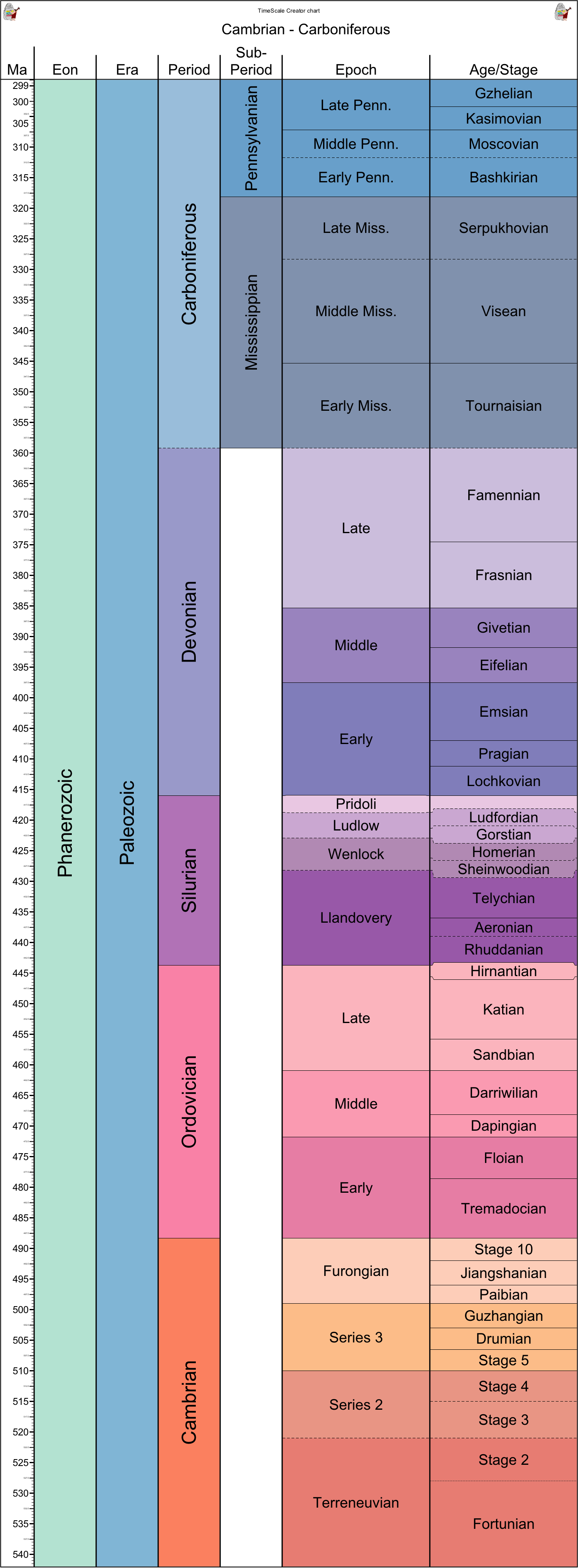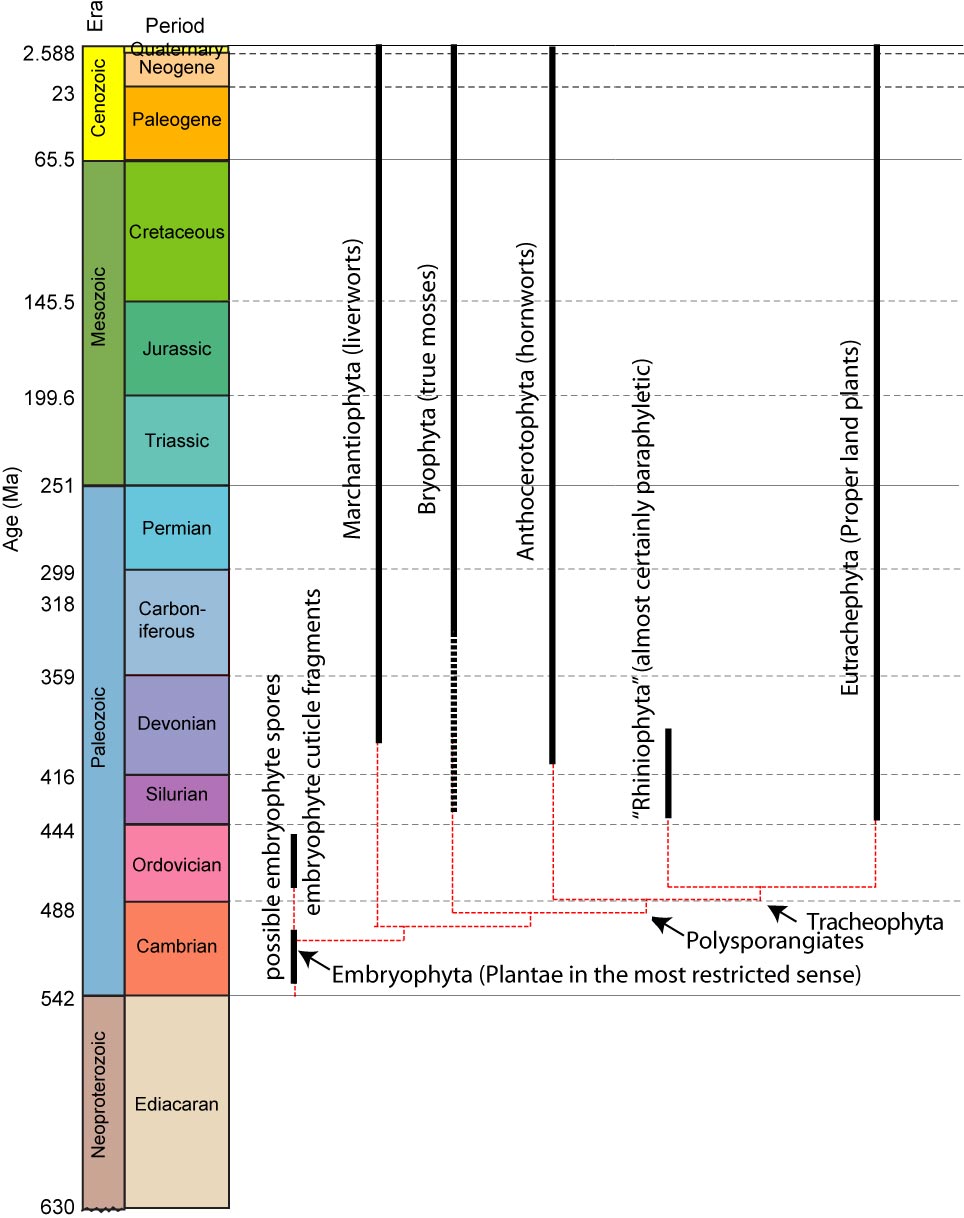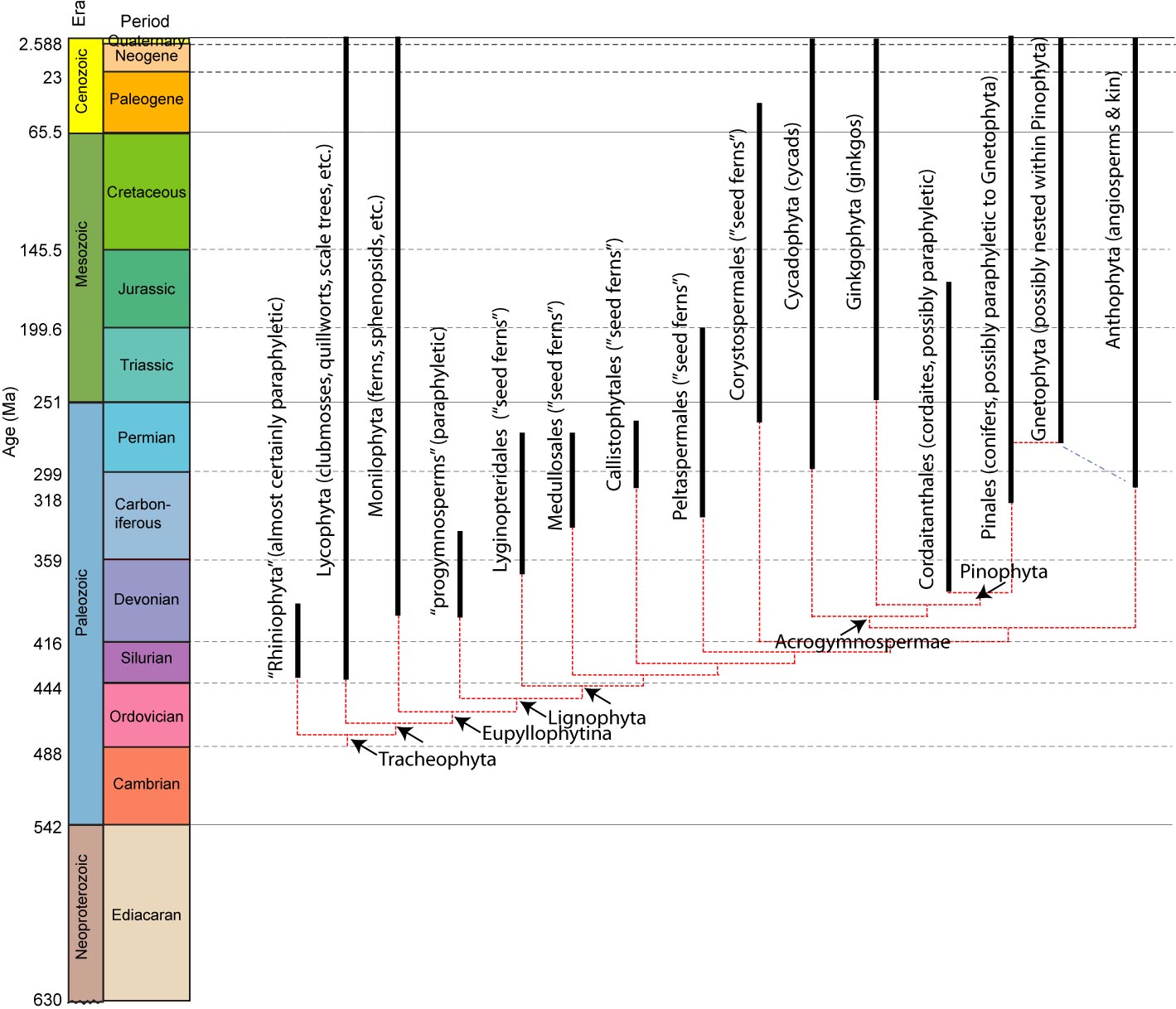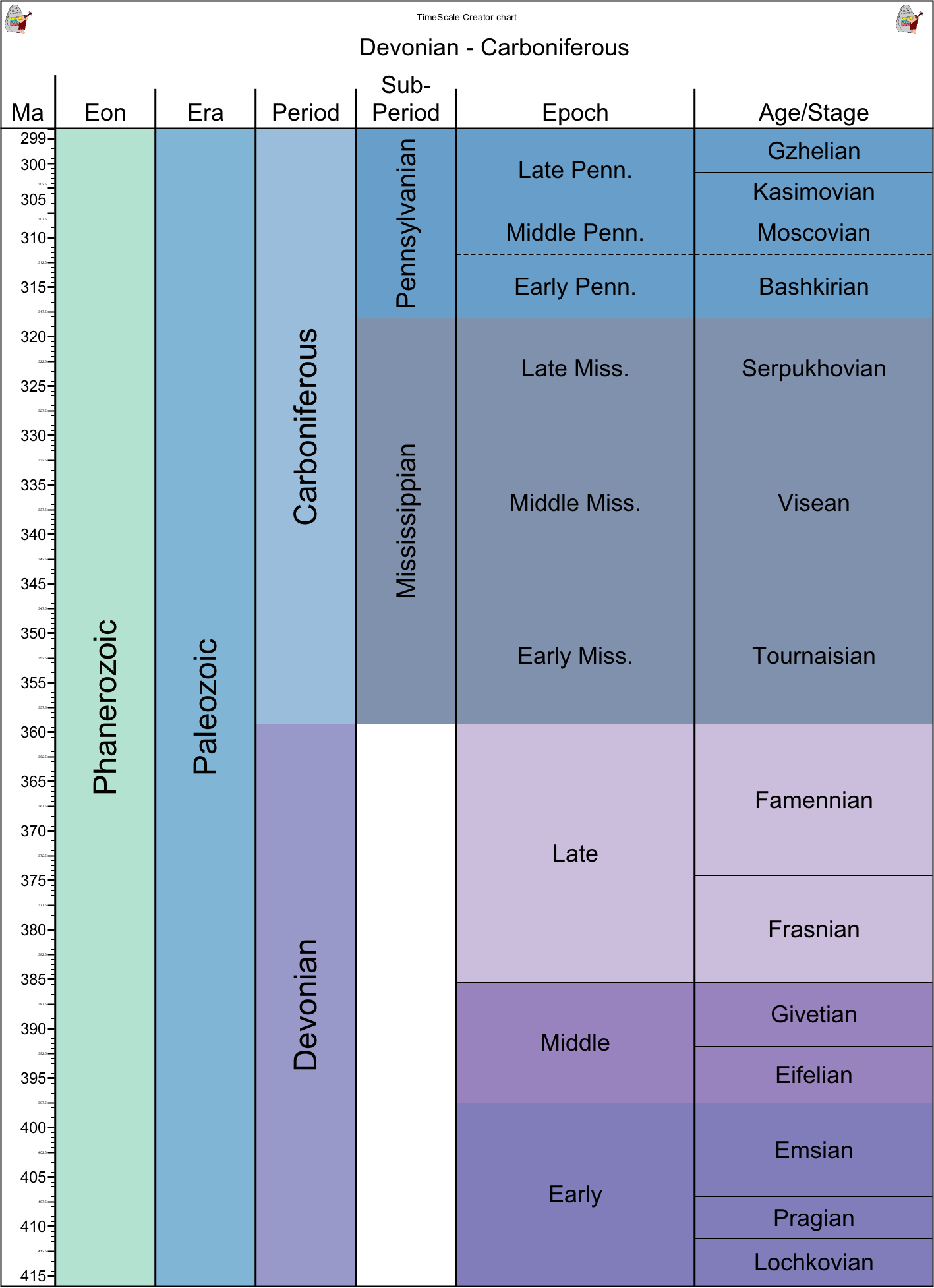

Going Green: The Conquest of Land by Plants

Why would organisms ever abandon life under the sea? After all, both freshwater and the terrestrial realm (together the continental environments are extremely challenging to organisms who first evolved in salty water.
Life in freshwater can be fairly difficult:
Even tougher is life out of water, where organisms have to deal with
There are certain similarity in the traits required to live in both freshwater and terrestrial habitats compared to marine life:
Estuaries (bays, deltas, wetlands, etc.) seem to be ideal settings for the transition from the marine realm to continental ones:
The trace fossil record of estuaries show from the Ediacaran through the Ordovician ichnofossils of marine organisms (especially of arthropods) in low energy, fine-grained bay deposits. During the Silurian, Devonian, and Carboniferous there is an increase of non-arthropods (bivalves, polychaete annelid worms, etc.) and presence of fossils in all estuarine environments.
Some major groups of organisms (red algae, corals, brachiopods, echinoderms) never made it into freshwater. Many of these are calcifying osmoconformers, and thus cannot handle the particular osmolarities of freshwater. Others made it into freshwater but not onto land: non-coral cnidarians (like hydroids), bivalves, sponges, bryozoans. Nearly all of these are suspension feeders, and thus they could not feed in the air.
But there are many groups that have made it onto land: earthworms from aquatic annelids; pulmonate and other land snails from aquatic gastropods; and the Big Three (two of which will be the foci of this and the next lecture):
For these, let's examine:
Let's take a look at the land plants:


Land plants are the sister taxon to the freshwater green algae Charales (stoneworts), and together are nested among freshwater green algae. Charales have "stems" which are multinucleate single cells, not homologous to the vascular stems of tracheophytes (see below). Charales reproduce by sending flagellated sperm cells in the water, and indeed spend their entire life cycle in the water.
In contrast the most primitive living embryophytes ("bryophyte-grade" forms) reproduce by releasing spores into the air, which land on wet surfaces, producing a generation of tiny plants that makes sex cells. The sperm are carried along by raindrops or over wet surfaces, fertilizing the egg cells, which grow into an adult plant which can generate spores.
The oldest possible embryophyte remains are the so-called "cryptospores" of the Cambrian and Ordovician: these are spores which are identical in form to basal crown-embryophyte spores, but could conceivably be from some aquatic stem-embryophyte taxa (i.e., that lived in the water but spread spores through the air to colonize new water habitats). There are also some possible thalloid (multicellular, tissue-grade but no definite organ systems) algal from the Cambrian and Ordovician which are conceivably from some terrestrial basal plants. Also present in the Ordovician, however, are tissue of organ-grade embryophytes.
They basal modern land plants (liverworts, hornworts, and true mosses: see cladogram above) are all built very low to the ground, lacking significant support or the means to transport fluids up into tall tissues. However, they do contain two major adaptations required by all land plants:
The next major phase of embryophyte evolution is Tracheophyta, the vascular plants. These plants show new adaptations:
The oldest tracheophytes are the paraphyletic grade of "rhiniophytes", known first from the Early Silurian. These primitive land plants show stems, branches, sporangia (spore-generating organs), but no leaves.
The next major adaptation of plants is:
The primitive Silurian and Early Devonian leafed plant Baragwanathia is a member of the Lycophyta (clubmosses). Lycophytes (in the form of lycopsid "scale trees") were one of the first very successful land plants, eventually producing trees up to 30 m tall. However, they still reproduced by spores and thus needed to live in environments that were at least seasonally wet.
The leaves of lycophytes ("microphylls") are very small and simple. The next major adaptation in the plant conquest of land were large complex vascular leaves. One of the first branches of the Euphyllophyta ("good leaf plants") are the Monilophyta (ferns and horsetails). Ferns still reproduce by spores, in a manner similar to "bryophyte-grade" plants. Ferns are actually quite diverse, producing "classic" ferns, tree ferns (in which many stems growing next to each other support the tall structure), and horsetails (a major group of ground cover plants in wet environments, and during the late Paleozoic a major group of tree-sized plants).
The last major advance in the first wave of plant colonization of land is the development of wood (tough tissue with bark and the ability to grow in thickness as the plant grows in height). The oldest members of Lignophyta (woody plants) still reproduced with spores: this differs from all living woody plants which are also members of Spermatophyta (seed plants). Early lignophytes are present in the Devonian, and were the trees that dominated the Devonian forests.
During the colonization of land, it wasn't just animals and plants adapting to land condition. Biological activity actually modified the surface (and subsurface):
During the Late Devonian, upland communities developed, with tracheophytes as the producers, arthropods as the major herbivores and predators, and fungi and arthropods as the detritivores. Stegocephalians were not a major part of this community, and even the plants couldn't move too far from the water source until the rise of seeds.

In spermatophytes, the old spore plant life cycle is replaced with a new system. In the gymnosperm condition, the adult plant produces male cones (that produce pollen, spread primarily by wind), which will land in the female cones, which fertilized the egg, to produce a seed. The seed has a cover which allows it be deposited on much drier land than any spore plant could colonize. Thus, seed plants were able to colonize essentially all habitats on land except for the driest deserts and coldest polar regions.
Late Carboniferous Forests: the forests that developed by the Late Carboniferous (or Pennsylvanian Subperiod) are very well-studied, as these are the major environment in which good quality coal was generated (more about this below). The lowlands were dominated by lycopsid "scale trees"; slightly upland from those were calamite horsetail trees; further up from that tree ferns and seed ferns; and seed ferns and other primitive seed plants dominating the land farthest from water.
Why the repeated cycles? The initial development of soils and early coal swamps sequestered a considerable amount of carbon in sediment, lowering atmosphere CO2 and global temperature. In fact, it became so low (comparable to modern values, and much lower than most of Earth history before or after) that the Earth entered an "icehouse condition", and even further into an "ice age" condition. The Milankovitch cycles that dominated later ice ages were very much in effect in the Carboniferous: indeed, this is why there are cyclothems, as the rise and fall of glaciers produced repeated burial of swamps. Carbon kept getting sequestered, and as a consequence carbon dioxide levels were kept very low.
A consequence of the burial of unoxidized carbon and the massive primary productivity of the coal swamps was an increase in the level of atmosphere oxygen (the highest it has ever been). This increased oxygen level probably explains the existence of terrestrial arthropods of unusual size (like arthropleurid godzillapedes, giant pterygote insects, and large terrestrial eurypterids. One of the main limitations on modern arthropod size is the fact that arthropods do not have powered respiration, but rather rely on passive diffusion of air over their book lungs or into their spiracles and through their trachea. With the increased levels of oxygen, much larger arthropods could be supported. With reduced oxygen levels in the later Permian (as well as the increase in diversity of amniotes), the arthropods were kept at smaller body size.
To Lecture Schedule
Back to previous lecture
Forward to next lecture